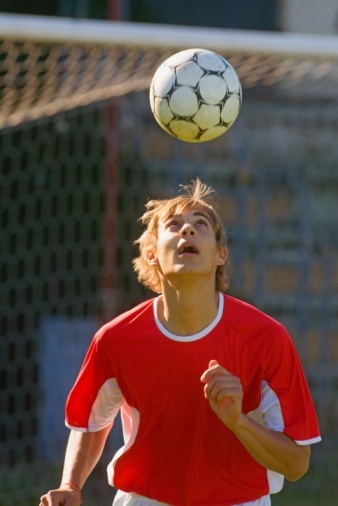While it is possible that intentional heading in soccer represents a form of repetitive subconcussive mild brain injury which, over time, could be a cause of chronic traumatic encephalopathy (CTE), the possible cause-and-effect relationship remains theoretical, say the authors of a new study, published in the journal Neurosurgery.1
Reviewing the theoretical concerns, the results of biomechanical laboratory experiments, and the available clinical data regarding the effects of chronic, subconcussive head injury during heading in soccer, researchers at the Cleveland Clinic found:
- no association between intentional heading and concussion;
- the forces involved in intentional heading were at levels well below those causing mild traumatic brain injury;
- soccer balls utilizing a stitched design resulted in a lower impact force than thermal molded balls;
- no support in recent studies for the findings of early Norwegian studies suggesting signs of chronic brain insult among soccer players who were known to be headers, with the newer studies failing to show that soccer players experience neurocognitive impairment compared with athletes in other sports, and reporting that more frequent headers scored similarly to less frequent headers on sophisticated neuropsychiatric evaluation.
- insufficient evidence to warrant the use of protective headgear, which laboratory tests failed to "provide any relief during heading over a full range of impact velocities."
Long-term effects unclear
The study cautions that while repeated heading does not result in acute injury, damage building up over the long term cannot be ruled out. "[E]ven if the cognitive impairment were to be mild, it would still present a major medical and public health concern because of the massive volume of soccer players worldwide with 200 million FIFA-registered players," said lead author, Alejandro M. Spiotta, M.D., of the Clinic's Cerebrovascular Center.
The authors therefore urged "players, parents, and coaches [to] be aware that although laboratory studies indicate that heading a soccer ball involves much less momentum and energy transfer to the head than other contact sports like American football, boxing, and hockey, any possible detrimental effect from repetitive subconcussive heading may only become clinically evident decades into the future," Spiotta said.
As with other experts, the authors continued to stress the importance of using age-appropriate balls in youth soccer and teaching proper fundamentals of heading technique.
1. Spiotta A, Bartsch A, Benzel E. Heading in Soccer: Dangerous Play? Neurosurgery 2012;70(1):1-11.
Posted February 15, 2012








